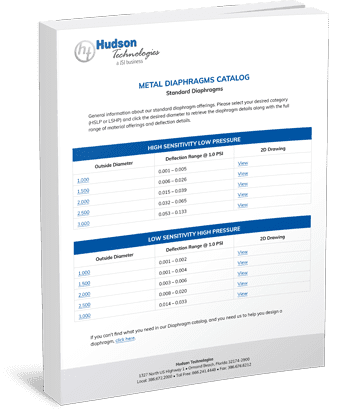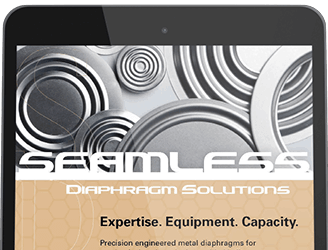Metal Injection Molding (MIM) vs. Deep Drawn Stamping (DDS)
Leave a CommentCreating industry-defining metal components starts by forging raw metal into the ideal shape and size. Fortunately, there are a wide variety of techniques available to help you create high-performing metal components. It can be challenging to decide which method works best for your project. Each type of metal forming offers unique advantages and disadvantages, and […]
2022 Deep Drawn Stamping Trends
Leave a CommentIn 2021, the phrase “supply chain” continued to make mainstream news just as it had done at the outset of the pandemic. Consumers have come to associate the phrase with the absence of their favorite brands from store shelves. However, for the U.S. manufacturing industry, including the deep drawn stamping industry, the supply chain challenges […]
Overview of Progressive Die Stamping
Leave a CommentClick to Expand With many manufacturing methods available, it can be difficult to choose the best option for your project. In this blog, we will compare progressive die stamping to various other methods to help you determine if this technique is the most suitable choice for manufacturing your components. What is Progressive Die Stamping? Progressive […]
Short Run vs. Long Run Metal Stamping Overview
Leave a CommentClick to Expand A production run is the period of time in which it takes to produce a predetermined quantity of products. For custom metal stampings, production runs can be short or long, depending on the needs and goals of the application. Here, we will discuss the advantages associated with both short-run and long-run stamping […]
Metal Diaphragm Material Selection
Leave a CommentMetal diaphragms are plates of metal built to axially deform and regulate pressure. Various systems across industries use the diaphragms to separate opposing fluids, regulate or cap pressure levels, indicate when pressure levels reach above certain thresholds, and more. For example, food processing, pharmaceutical production, and semiconductor manufacturing all rely on well-constructed metal diaphragms to […]
Guide to Heat Treating Deep Drawn Stamped Components
Leave a CommentFor applications requiring complex parts and efficient, repeatable manufacturing processes, deep drawn stamping is one of the best processes to use. Deep drawn stamping can manufacture high volumes of parts with a combination of speed, accuracy, and consistency. It also produces parts in a single piece, which helps eliminate assembly requirements. Additionally, deep drawn components […]
Reducing Lead Times When Manufacturing Metal Components
Leave a CommentMetal fabrication encompasses various processes that turn metal stock material into finished components and goods. Each fabrication method requires a different set of skills, training, and specialized equipment. The time it takes to complete a metal fabrication project can vary widely based on the specific provider, the process used, order volume, design complexity, and many […]
Deep Drawn Stamped Solutions for the Medical Industry
Leave a CommentGood medical devices must satisfy three categories: they achieve tight tolerances, healthcare professionals can easily use them, and they help the patient heal. High-quality equipment and tooling ensure high-quality end parts for medical applications ranging from device pumps and motors to pacemakers, defibrillators, and surgical equipment. Benefits of Metal Stamping Over Other Metal Fabrication Processes […]
Tags: metal stamping
Tips for Deep Drawing Stainless Steel
Leave a CommentManufacturing with stainless steel provides many of the benefits of steel without the high potential for rust and corrosion. The chemical composition of stainless steel includes at least 10.5% chromium, as well as iron, nickel, and manganese. When exposed to air, the chromium in stainless steel oxidizes, creating a protective layer that is highly resistant […]
Benefits of Titanium in the Medical Industry
Leave a CommentThe medical industry has used titanium in surgical and dental equipment since the 1940s. Today, it can be found in a wide array of biomedical implants such as pacemakers, eye implants, and hearing aids. Titanium possesses a unique ability to bind with bone and living tissue, making it an ideal material for orthopedic implants such […]



















